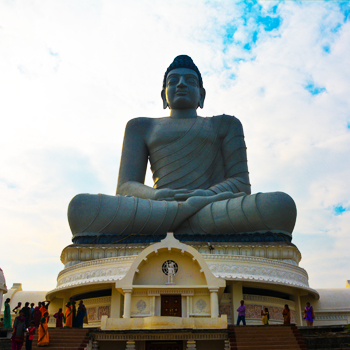Explore Guntur: Historical Monuments, Agricultural Heritage, and Cultural Gems

Guntur, located 64 km from the Bay of Bengal, rests in Andhra Pradesh and is the state's fourth-largest city. It serves as a multifaceted hub, blending educational facilities, historical significance, and primary roles in both the textile and transportation sectors. Also Guntur is noteworthy for its cultivation of cotton and tobacco.
The city is a dynamic center of commerce and industry, enriched with numerous historical monuments. It leads in textile production and excels in the cultivation of cotton and tobacco.
History: Guntur’s history stretches back to the 10th century, with references found in an inscription by Chalukyan King Ammaraja. Although the Chalukyas predominantly governed the area, there is also evidence of the Nagals’ rule during certain periods.
An ancient temple dedicated to Lord Shiva, known as Agasthyaeswara Sivalayam, stands in the city. Dating back to the 12th century, the temple features ancient inscriptions and is believed to have been constructed by Agastya.
Many of Guntur's notable structures were erected during the French and British reigns. Under British governance, Guntur emerged as a crucial export hub, a status it maintains today. The region is famed for its high-quality chillies, primarily exported abroad, and its significant production of cotton and tobacco.
Despite the wave of modernization, Guntur retains its charm and remains an idyllic holiday destination. Prominent attractions include Kondaveedu Fort, Sitanagaram, Undavalli Caves, and the ancient relics of Amaravathi.
FAQs:
What is Guntur known for?
Guntur is renowned for its historical monuments, vibrant textile industry, and significant cultivation of cotton and tobacco. It's also famous for exporting high-quality chillies worldwide.
What are the historical landmarks in Guntur?
Key landmarks include the ancient Agasthyaeswara Sivalayam Temple dedicated to Lord Shiva, dating back to the 12th century, and the impressive Kondaveedu Fort, offering panoramic views of the region.
What is unique about Guntur's agricultural heritage?
Guntur excels in the cultivation of cotton and tobacco, contributing significantly to the region's economy. The city is also famous for its export of high-quality chillies, which are widely used in culinary arts.
What are the top tourist attractions in Guntur?
Tourists flock to Guntur to explore attractions such as the ancient relics of Amaravathi, the serene Sitanagaram, and the historic Undavalli Caves known for their intricate rock-cut architecture and Buddhist influence.
How can one reach Guntur?
Guntur is easily accessible by road from major cities in Andhra Pradesh. The nearest airport is in Vijayawada, approximately 50 km away, with rail connectivity via Guntur Junction being another convenient option.